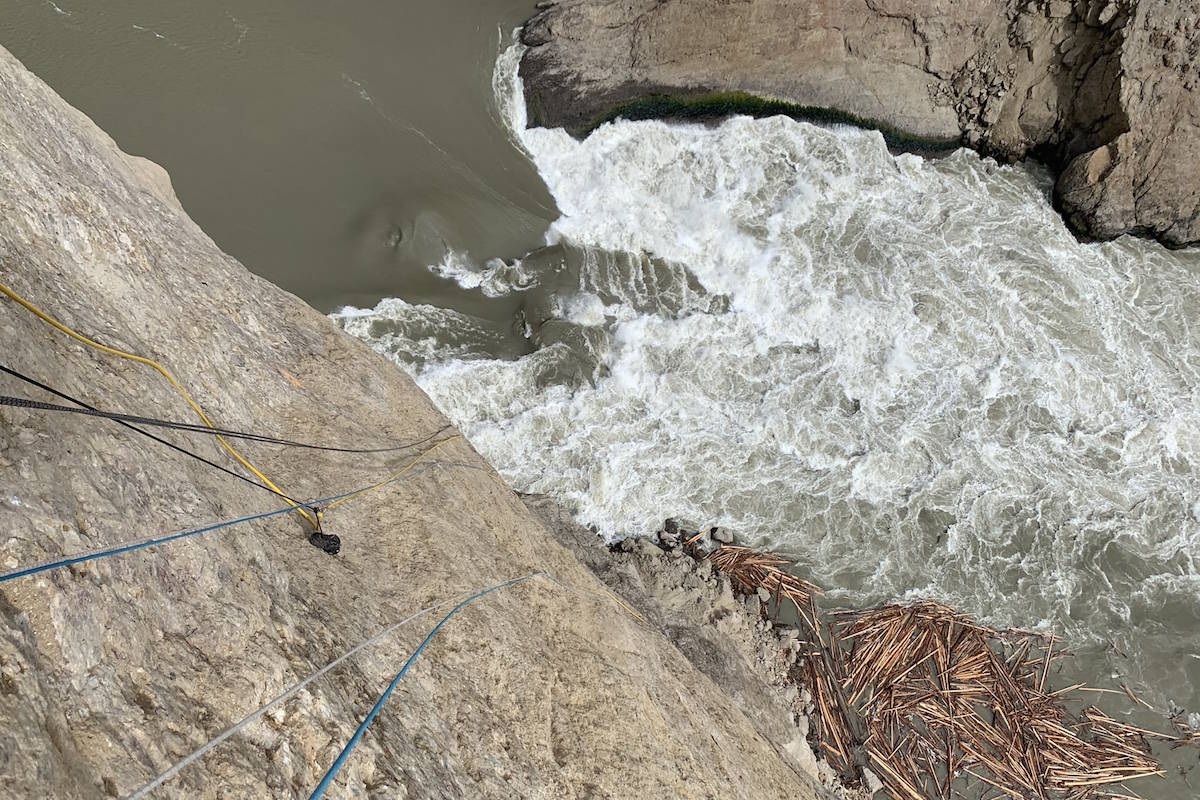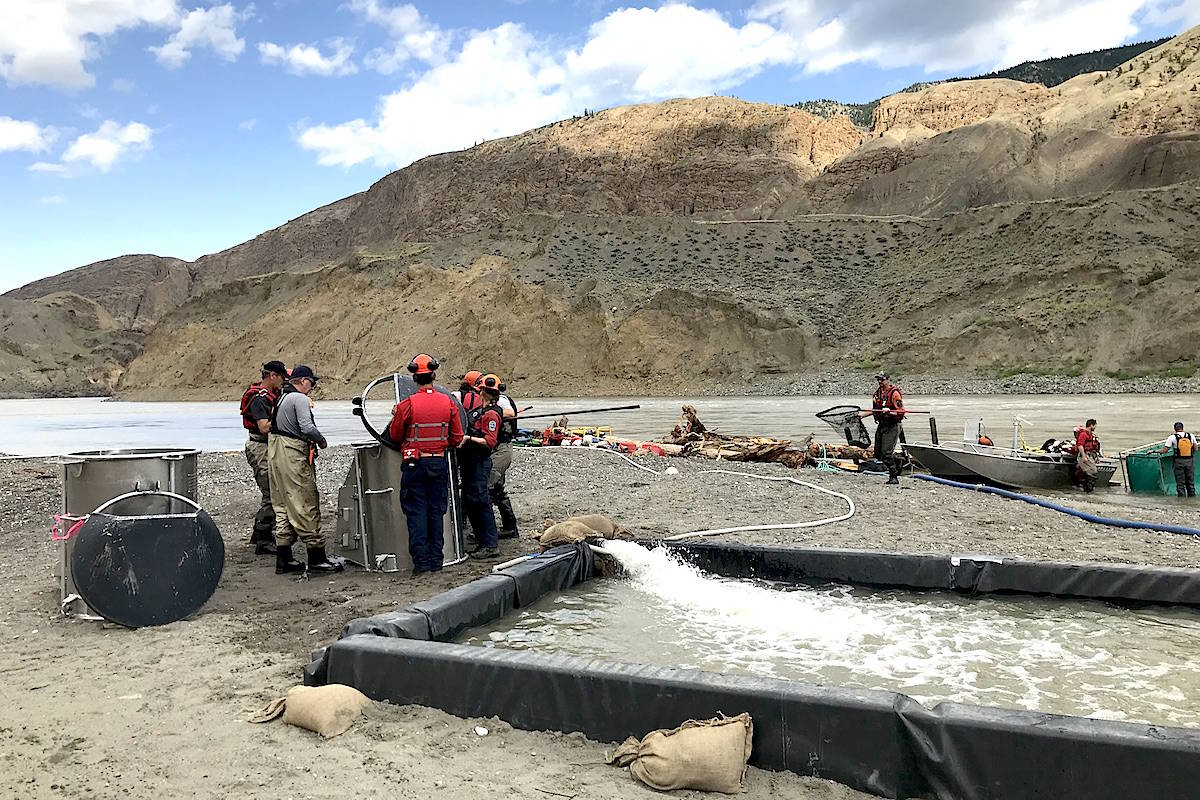Tanks containing sockeye salmon will soon be on their way down to the Cultus Lake Salmon Laboratory in Chilliwack from the Big Bar landslide site on the Fraser River.
Researchers at the federal lab in Chilliwack will be leading a pilot project to preserve some of this year’s run of Early Stuart sockeye through enhancement.
About 200 of the Early Stuart had reached the obstruction site by Sunday, and other sockeye populations were expected to be following right behind them.
“This creates a brief window of opportunity to confidently collect the Early Stuart before they are mingling with significant numbers of other sockeye stocks,” according to the July 28 release from the Incident Command Post team.
The sockeye on their way to the lab could yield up to 300,000 eggs, which would be incubated to produce salmon fry. Options range from fry being released back to the Stuart Lake system as part of stock enhancement, or they could be reared to maturity to contribute to future generations.
They are ironing out the logistics of transporting the fish in tanks from the Big Bar Landslide site to the rearing facilities in the Chilliwack lab by truck. The rationale for the enhancement program, proposed by First Nations, is doing what they can is to preserve some portion of the at-risk population until they have “increased certainty that natural migration can continue.”
The worry was that the Early Stuart sockeye would never make it to their spawning grounds near Fort St. John if they couldn’t open up a fish passage to let them through.
Federal and provincial government reps, along with the First Nations leaders, and other experts, have been strategizing how to help the trapped fish from on-site, and from the Incident Command Post (ICP) in Lillooet, where they have been chipping away at the blockage problem from several different angles.
The swift-moving water is impeding salmon and other fish from migrating upriver to reach spawning grounds, but they also created hazardous conditions for responding agencies at the site, which is not accessible by road.
The salmon being trucked down to the lab will undergo DNA analysis on arrival at Cultus Lake to confirm their “stock origin” before being transferred to holding tanks pumped with “cool, calm water” until they mature.
Re-opening the fish passage in the river has been the collaborative goal, and multiple strategies have been attempted.
“Some of these concurrent actions are to manipulate the slide site itself, while others are to transport fish above the slide.”
“The Big Bar Landslide Incident Command would like to acknowledge the contribution of a member of the Yinka Dene who proposed this salmon enhancement strategy for this Early Stuart Sockeye run that are currently affected by the Big Bar landslide, and for the decisions made by the First Nations Leadership Panel to endorse this project.”
READ MORE: Unblocking fish passage the goal
READ MORE: Visit from B.C. premier
@CHWKjourno
jfeinberg@theprogress.com
Like us on Facebook and follow us on Twitter.




